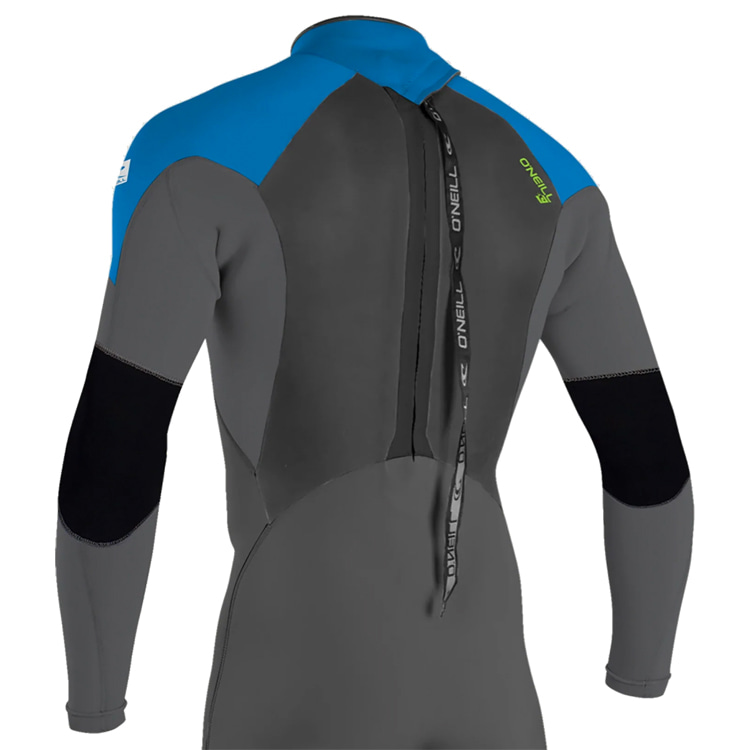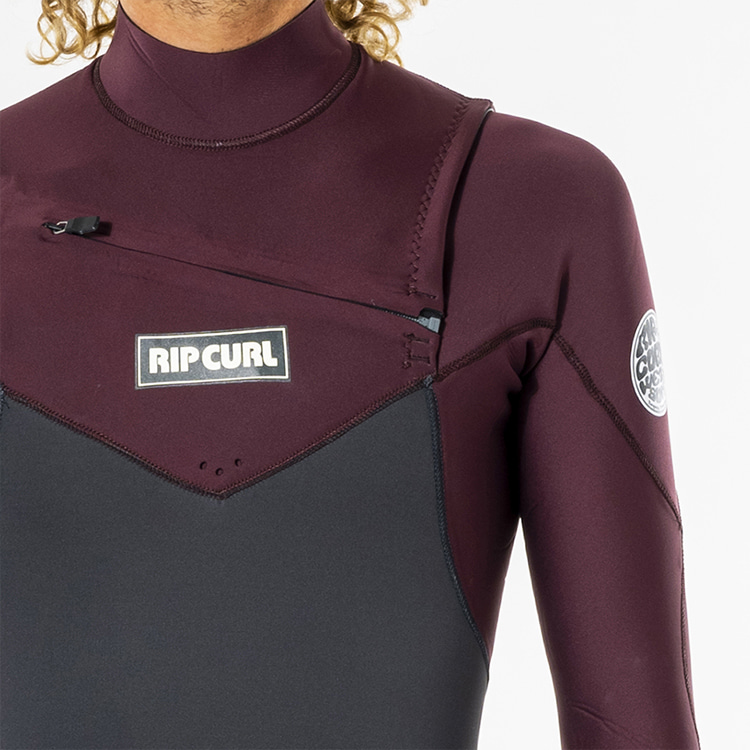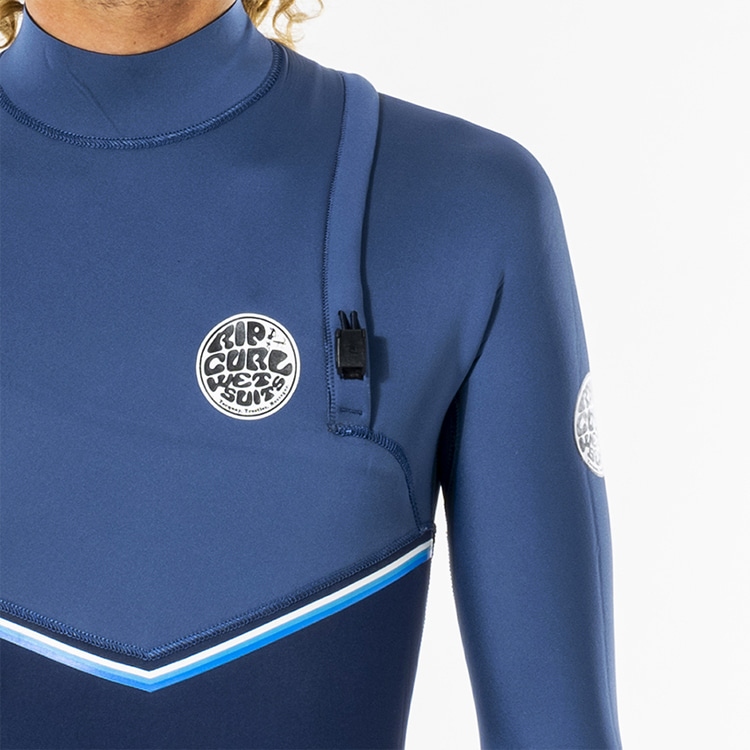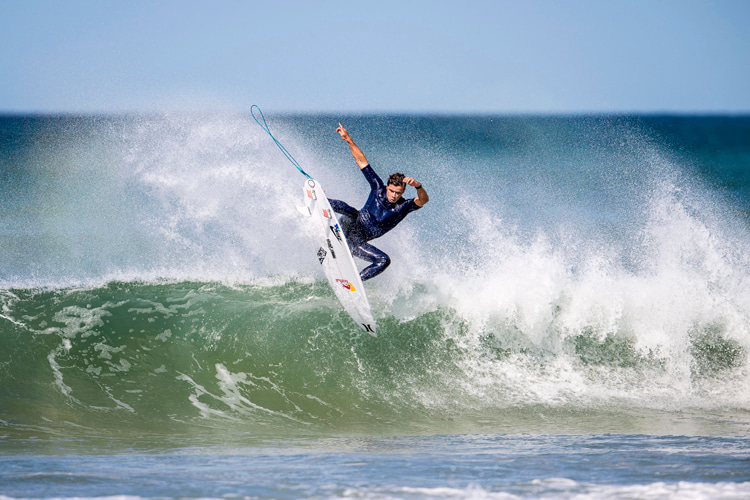When it comes to surfing, there's no question that wetsuits are an essential piece of equipment.
Wetsuits provide warmth, protection, and freedom of movement, allowing surfers to stay in the water longer and enjoy their time on the waves without the risk of hypothermia.
But what exactly are wetsuits, and why are they so relevant for surfers?
A wetsuit is a type of neoprene-based apparel designed to trap a thin layer of water between the skin and the suit.
This water is then heated by the body's own warmth, keeping the wearer warm and comfortable in the sometimes chilly and unpredictable waters of the ocean.
Wetsuits also provide a degree of protection from the elements and can help reduce sunburn risk from long days spent in the sun.

Balancing Flexibility and Warmth
One of the most important benefits of wearing a wetsuit while surfing is its increased flexibility.
By trapping a thin layer of water between the skin and the neoprene material, wetsuits allow surfers to move more freely and with greater agility.
This is especially important when executing complex maneuvers that require quick, precise movements.
In addition to providing extra flexibility, wetsuits keep surfers warm and dry, which are incredibly relevant advantages in some latitudes.
By trapping a layer of water between the skin and the neoprene material, wetsuits can keep the wearer's body temperature consistent, even in cold water.
This is particularly relevant during winter months when the water is freezing.
Finally, wetsuits provide an extra layer of protection from the elements.
Wetsuits are designed to block out wind, rain, and other elements that can make a surf session uncomfortable.
In addition, wetsuits provide some level of protection from the sun's harmful UV rays.
There are eight main types of surfing neoprene protection and three different entry systems.
Let's take an in-depth look at the benefits and drawbacks of back zip, chest zip, and zipperless wetsuits.
Back Zip Wetsuits

Back zip wetsuits feature a full-length zipper on the back, typically running from the neck down to the lower back.
They are also typically more comfortable since they don't require you to pull the suit over your head, offering more flexibility and ease of use.
Back zip neoprene models provide a secure, comfortable fit and are a popular pick in several water sports, including surfing, bodyboarding, bodysurfing, snorkeling, and scuba diving.
The design makes getting into and out of the wetsuit easier, as the zipper is located on the back, away from the body.
They also provide greater flexibility and range of motion than some other wetsuit entry designs, which makes them ideal for more active water sports.
Pros
- Back zip wetsuits provide a snug, comfortable fit that is easily adjustable;
- The back zip entry allows easy on and off, even when wet;
- They are generally more affordable than front/chest zip wetsuits;
- They could provide more warmth than other wetsuits if they feature more panels and better seams;
- They provide increased flexibility and range of motion due to the zipper being located in the back of the suit;
- They are usually more affordable compared to other types of wetsuits;
Cons
- The back zip entry can be difficult to zip up and down when putting on and taking off the wetsuit;
- They can be uncomfortable in certain areas, such as the neck;
- They can be more prone to water leakage due to the zipper being located in the back;
- They are not as effective in providing warmth as other types of wetsuits due to the zipper being in the back;
- Back zip wetsuits can be more difficult to adjust while in the water due to the zipper being in the back;
- They tend to be less durable and require more care. The zipper itself can be prone to wear and tear over time;
Chest Zip Wetsuits

Chest zip wetsuits are designed to provide a snug fit and maximum flexibility when in the water.
They feature a front zipper that runs along the chest, allowing the neoprene protection to be relatively easily taken on and off.
Chest zip wetsuits also typically feature a water-sealing neck entry system that prevents water from entering and provides a more comfortable fit.
Additionally, the chest and back panels of the wetsuit are usually constructed with thicker and special neoprene to provide insulation and warmth during cold water activities.
Pros
- Chest zip wetsuits are more comfortable than traditional back zip wetsuits;
- They provide better flexibility and range of motion, allowing the user to move more freely while still providing warmth and protection from the elements;
- They often feature better construction materials, resulting in a longer lifespan;
Cons
- Chest zip wetsuits tend to be more expensive than back zip wetsuits;
- They can be more challenging to get into and out of than back zip wetsuits, especially for those with limited flexibility;
- They can sometimes be less effective at blocking cold water than back zip wetsuits;
- The zipper can be uncomfortable when lying down;
Zipperless Wetsuits

Zipperless wetsuits are neoprene wetsuits without zippers.
Instead, they feature an overlapping closure system to keep the wetsuit in place and are designed to be more comfortable and provide a better fit for the user.
Zip-free neoprene models are often made with different materials and construction techniques, allowing for greater flexibility and comfort.
They are also much lighter and more breathable than traditional wetsuits, allowing for greater mobility and performance.
Pros
- They are more comfortable and provide a better fit than traditional zippered wetsuits because they are designed to fit the contours of the body better;
- They are also more durable and will last longer, as there is no zipper to break or tear;
- They are more environmentally friendly than ones with zippers, as they don't require metal or plastic components;
Cons
- They are usually more expensive than traditional wetsuits with zippers;
- Although they don't require zipping and unzipping, they are often more challenging to put on and take off than their zippered counterparts;
- They may not be as tight-fitting as traditional zippered wetsuits, which can be an issue for some activities like surfing or swimming;
- Zipperless wetsuits can be difficult to adjust when wet, so it is crucial to make sure the fit is correct before entering the water;
In conclusion, there are three different types of wetsuit entry systems.
Each model has its advantages and disadvantages, so it is essential to consider which suits your individual needs and preferences.
The best way to choose the one that suits your needs is by trying them at your local surf shop.
Remember that you should feel comfortable and able to move freely while staying warm and safe in the water.
